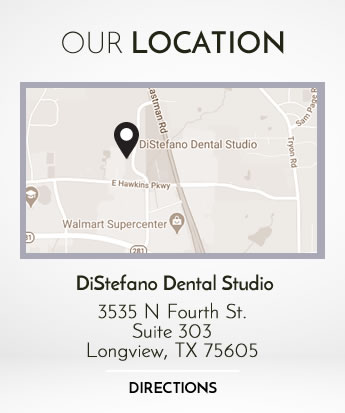
Facing dental issues are a fact of life, no matter your age. The likelihood is almost certain that at least one member of your family will require dental treatment at some point, not to mention the need for regular checkups and cleanings. The promise of dental care being required by every family member means that it can be beneficial to have a family dentist who can take care of each one’s oral health.
Although you might choose to seek oral care from a general dentist, there are some unique advantages that family dentists offer. First and foremost, a family dentist treats every member of your family no matter their age. This type of dental practice is comfortable handling any age group, while a general practice might not be as prepared for the young and old and everyone in between.
Another benefit is that you can find a single family dental practice and not have to keep looking for a dentist for each family member. You can convey your family information one time to one office, and the staff will get to know all of you. The dentist and staff will learn about the oral health of every family member, and you can feel confident that each person is receiving the same quality care.
Once you choose a family dentist, everyone will know what office to go to and may even be able to make joint appointments. It will be easy to communicate with a single location, and you’ll grow comfortable in dealing with the same group of people for every family member. Many people appreciate having a long-term professional healthcare relationship, and feeling confident in the care and experience each member of your family will have there.
We treat patients from Longview and the surrounding area

One of the most important decision for the health of you and your family is a family dentist. Similar to a general dentist, family dentists offer a few significant exceptions. Both types of dentists treat oral health and manage dental hygiene, but family dentists offer care to patients of all ages. This makes family dentistry a convenient choice especially if you have family members of various ages in your home.
Traditional dental services that you’d expect from any dentist are available at a family dental office. Preventative services like professional cleanings, fluoride treatments, and thorough examinations are offered. Regular checkups allow for diagnostic tests to catch problems in their early stages, before they have a chance to advance and become very painful or complicated to repair. Procedures like dental fillings, bonding, root canal therapy, teeth whitening and more are often available through your family dentist. If specialized care is required that is not performed in the office, the dentist will provide a referral to an appropriate specialist for treatment.
Finding the right family dental practice for your whole family is vital. This will increase the comfort level of your family members and promote checkups every six months as advised by dentists. To choose your family dentist, ask friends, family, coworkers and neighbors for recommendations. Schedule a consultation to meet the dentist and staff, see the office, and make sure the practice meets your requirements. It is especially important to ensure children are comfortable with the family dentist to help avoid fears or anxiety. Also look for an office convenient to your home so that everyone will be more likely to keep their appointments.
From baby teeth in kids to permanent teeth in adults to missing teeth in seniors, family dentists are trained and equipped to handle everyone’s needs.
If you live in the Longview area contact us today

Family dentists can do so much for you and your family. A family dentist is able to perform any other task another dentist can do, but they’re able to perform them on your entire family. The convenience of this service to each member of your family will save you time and trouble. Your family dentist obtains everyone’s complete dental histories, and gives the best treatment possible based on an experienced review of those records.
Because a family dentist recognizes that your time is very valuable, appointments can often be made in blocks so that services can be offered to each member of your family on the same day, near the same time. You can make one trip and be finished with your routine dental checkups, x-rays, cleanings and preventative care for six more months!
Family dental offices also offer cosmetic dentistry services like teeth whitening or porcelain veneers. Dental crowns, dental bridges, fillings and other bonding work can easily be accomplished there. A family dentist also offers root canal treatments, extractions or emergency care.
Your family dentist wants to be a friend of your family for life. Having a dentist who has seen your children’s teeth through their formative years and into adulthood is of huge benefit to your children. As long as your children remain in the area, they will never have to search for another dentist. They will have formed a trusting and comfortable bond with the family dentist, ensuring that good oral hygiene habits will continue into adulthood, as will routine preventative care.
Sedation dentistry is likely to be offered at your family dentist, especially to any patient with a phobia or other anxiety about dental appointments. Even younger patients can benefit from sedation dentistry, allowing them to calm their bodies and to comply with requests by the dentist, keeping everyone safe during treatment.
You are the priority to your family dentist. The relationship that is formed with you and your family is one that your family dentist wants to see last a lifetime.
We treat patients from Longview and the surrounding area

Do you have children? Are you exhausted from driving all over town for clubs and meetings and appointments for your family? If you are finding yourself occasionally overwhelmed by the needs of your family, a family dentist can help you simplify one area of your life. A family dentist can see each member of your family, from the youngest to the oldest, sometimes on the same day in the same block of time!
Because of the rising popularity of family dental practices, you have more choices than ever to address the oral health needs of your entire family. Choosing the right one can be difficult and confusing. If you’re looking for a new family dentist, here are some factors you can consider when you’re choosing which family dental practice in your area is for you:
- How much training does this dentist have? How long has he or she been in business? All dentists must graduate from dental college, but a truly exceptional dentist will pursue continuing education courses in an effort to stay abreast of the latest methods and technology in their field. Ask what current certifications the dentist holds. How experienced is their staff?
- Are the employees and the dentist good with children? When you visit their offices, do you see an environment that’s inviting and warm? Are there games or activities for children of all ages? Are the magazines you see appropriate for all ages? Do the patients in the waiting area seem comfortable and relaxed? Does everyone you see seem happy? Did the front office staff greet you in a friendly manner? If any of the answers is no, then you should look at the practice more closely before you make an appointment.
- How modern is the office? A good family dentist will have current technology and sedation dentistry options to ensure a pleasant visit for all.
Choosing a family dentist is an important step. Don’t rush into it; do some research before you decide, and you can ensure that you make the best choice for your family.
If you need a dentist in Longview contact us today

You may be diligent about keeping up with your yearly physical with your general physician, but you may not be as careful about seeing your family dentist as often as you should. People tend to neglect dental checkups, thinking that if their teeth aren’t hurting then there’s no reason to go to the dentist. This is untrue! Regular checkups and cleanings play an important role in your health and should not be overlooked.
The most obvious reason for every member of your family to go to your dentist is the potential medical benefits. Even if you perform proper oral hygiene routines at home, you can still develop medical problems that require intervention. Plaque and decay in hard-to-reach places may create cavities that need fillings. Gum disease can start off as minor gingivitis but worsen into advanced periodontal disease without treatment, and untreated gum disease might put you at higher risk for heart disease or diabetes. A tooth’s interior section called the pulp can become infected and die, eventually risking tooth loss. So skipping your regular dental examinations can have serious medical consequences.
In addition to protecting your health, family dentists keep your smile looking its best. Professional cleanings make your teeth brighter and healthier, and you’ll also likely end up with more self-confidence. At your dental visits, if you have concerns about the appearance of your smile, you can also get information and recommendations about cosmetic dental procedures that might improve your smile even more.
Another benefit of maintaining regular dental checkups is that it can cost you less money in the long run. If you think skipping a visit is financially smart, you’ll also be missing the opportunity to catch problems early and handle them before they reach the stage of expensive oral procedures.
It’s never the best idea to avoid dental care with your family dentist. Schedule and keep your appointments every six months for ideal oral health.
Our dental office is located in Longview

Maintaining a healthy, winning smile is easy with the help of general dentistry. People have all kinds of excuses for avoiding dental checkups. Don’t have the time? Advancements in procedures make treatment faster and more efficient, and extended hours allow patients to better fit appointments in their schedules. Too expensive? Many procedures are reasonably priced and most offices offer financial plans. Afraid of the dentist? General dentistry offers options for maintaining patient comfort and minimizing pain.
Once you realize there is no good excuse for skipping dental treatment, you should go for checkups twice a year for optimum care. Prevention is often the key to having the best oral health. Routine checkups identify early warning signs of issues like tooth decay or gum disease, so that problems can be corrected before becoming severe. Thorough examinations, diagnostic tests like X-rays, and regular professional cleanings are all steps to a healthy smile.
General dentists also teach proper hygiene methods so that you can keep your mouth in good shape between checkups. Routine dental care also may prevent harmful bacteria from entering your bloodstream and damaging other parts of your body.
If problems are diagnosed when you visit your dentist, various treatments can be performed to restore your oral health. General dentists treat all kinds of issues and typically offer dental fillings, root canal therapy, extractions, bonding, crowns, dentures and more. If there are procedures that you need that your general dentist doesn’t perform or would prefer you visit a specialist for advanced treatment, you’ll be referred to a qualified and experienced doctor.
General dentistry can make the difference between a dull, damaged, unhealthy smile and one that will look nice and function well for the rest of your life. Don’t hesitate in visiting your dentist regularly for optimum oral health.
Schedule your appointment at our Longview dental office









